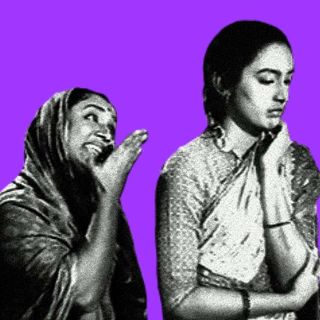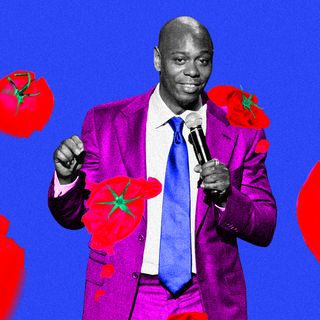
Why Martin Scorsese’s Criticism of the Marvel Franchise Continues to Be Relevant
A combination of streaming, franchising, and marketing thanks to the Marvel model has changed how movies are made — not necessarily for the better.

This year saw a slew of Marvel series and films come out — more than the studio’s own two-films-a-year strategy. Predictably, the release of Thor: Love and Thunder over the weekend was accompanied by ‘Scorsese’ trending on Twitter — a recurring incident with every new Marvel release. It has to do with the fact that three years ago, Scorsese weighed in on Marvel films as a phenomenon, opining that he doesn’t consider them to be cinema. In an op-ed for The New York Times, he went on to compare the movies with theme parks; suggesting that they offer entertainment value but are lacking in the depth that makes cinema what it is.
His comments have since haunted Marvel fans and the studio itself — what does it mean for a great auteur director to dislike the biggest cultural behemoth in film and television right now? Some have argued that Scorsese represents the old guard of filmmaking: from a time that lacked diversity and told stories about the mafia, crime lords, and masculine violence that, equally, were spectacles unto themselves. What, then, is wrong with putting a cape on it?
The debate has never been more relevant. We sit at the cusp of a paradigm shift in movies: streaming platforms are one reason why, and the complete monopolization of the industry by Disney is another. These two factors have changed the model of filmmaking itself — one of Scorsese’s main complaints is that we’re now in an age of audience testing and playing it too safe, with no emotional danger, nothing unique or revelatory about the human experience.
At the heart of the culture war drawing the fault-lines between Scorsese on one side and Marvel on the other, is the question of whether cinema and entertainment are fundamentally two different things. Marvel promises entertainment, and the box office tells us that it makes for good business. But herein lies the catch: entertainment is often driven by a profit-incentive that dictates where stories can go, and indeed what stories are even told. In cinema, the argument goes, the art is what it’s all about.
On the other hand, many have pointed out how, unlike the films of Scorsese’s generation, Marvel responds to calls for diversity, even if the jury is still out on how meaningful it is. Black Panther for instance was a contender for the Best Picture Academy Award, and it is difficult to argue that it did not contain the elements that Scorsese outlined as being constitutive of “cinema.” Ms. Marvel is the latest series to have pushed the envelope once again, featuring a young Pakistani-American girl as the titular character.
Related on The Swaddle:
Have Superheroes Become Culturally Obsolete?
Further, the idea of “greatness” ascribed to individual artists is itself deserving of some critique. “When Martin Scorsese says that the Marvel pictures are not cinema, he’s right because we expect to learn something from cinema, we expect to gain something, some enlightenment, some knowledge, some inspiration,” Francis Ford Coppola said, of Scorsese’s comments. It may seem like intellectual snobbery, and undoubtedly the mythos of the auteur is also one that has to be held up to scrutiny. The legendary status offered to some people — mostly white men — as geniuses allows them to gatekeep what art can and cannot be, even protects them from any accountability themselves. It happened with Woody Allen, whose directorial greatness protected him in large part from greater scrutiny for allegations of sexually abusing his step-daughter.
Still, there is something to be said for how the franchise model of creating films and TV shows occupies space — too much, almost, to leave room for anything else. Marvel features are hugely successful in the box office, and many have created an emotional impact among a wide range of audiences. But in the bid to stay at the zenith of the cultural moment, the studio churns out more while also offering less. Many of the films feel “factory-made,” as a colleague pointed out — and it has to do with the fact that the model of production does, in fact, resemble a factory.
In other words, Marvel is a result of what happens when capitalism meets cinema: it is palatable, repetitive, safe, and never subversive or risky the way art is sometimes called upon to be. When several actors rose up in vehement defence of the studio, they mainly took offense at the fact that their work wasn’t considered cinema. But the insistence on claiming that label while holding on to untold amounts of wealth in profits — while continuing to shape stories to maximize it rather than giving primacy to the story itself — is misplaced.
There is no way to ask for different stories — what franchise filmmaking offers instead is to put different people, at most, in the same types of stories. Behind all the bluster and spectacle, then, is something formulaic that arguably never challenges people. Instead, it caters to our needs and takes up too much space in doing so. In other words, it turns film into retail — nice to have, but never great in and of itself. And with the visible success, monetarily speaking, of the Marvel franchise, the model itself has become so mainstream as to be emulated by other industries. The “pan-Indian” cinema, for instance, is another emerging trend that promises, above all, spectacle. There is much to be desired, however, in terms of what we take away from such films. In order to make big blockbusters that cross borders, differences or context necessarily have to be smoothened out — leaving only the lowest common denominator left to work with.
If films as a whole suffer from the problem of being too generic, predictable, and fizzle out with a burst of glory almost instantaneously, there is a problem much bigger than merely the distinction between entertainment and cinema. We’re living in a time when we need to understand ourselves, our communities, and what it would take for humanity to survive. There are high stakes — almost too high for any one hero to take on for themselves. But as a result of the normalization of this genre to the extent that it isn’t impossible to imagine a future where the only movies coming out are Marvel movies, fewer entities are committed solely to telling the story of us, as human beings, in the human condition.
Rohitha Naraharisetty is a Senior Associate Editor at The Swaddle. She writes about the intersection of gender, caste, social movements, and pop culture. She can be found on Instagram at @rohitha_97 or on Twitter at @romimacaronii.
Related


Can We Move On: From the Trope of the Woman Whose Feminism Is Expressed Only Through Smoking, Drinking
